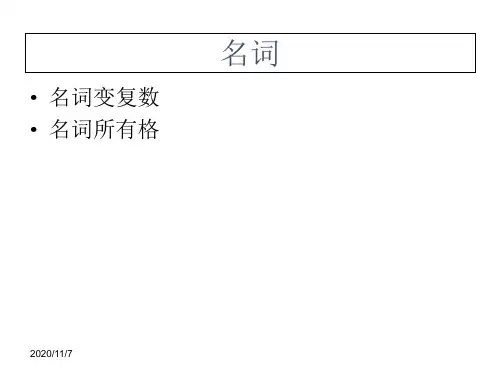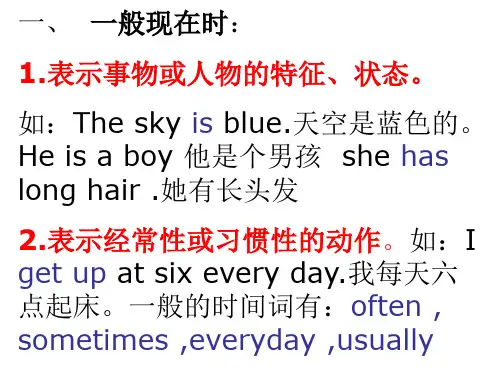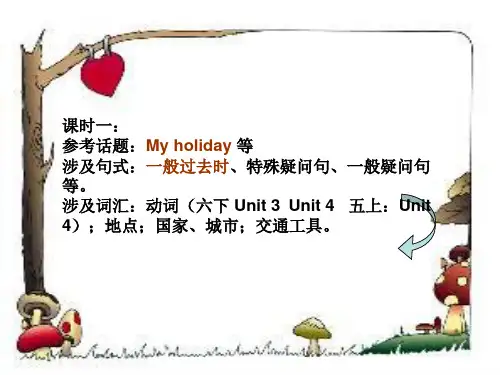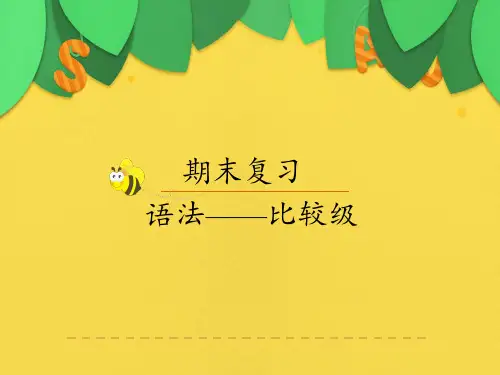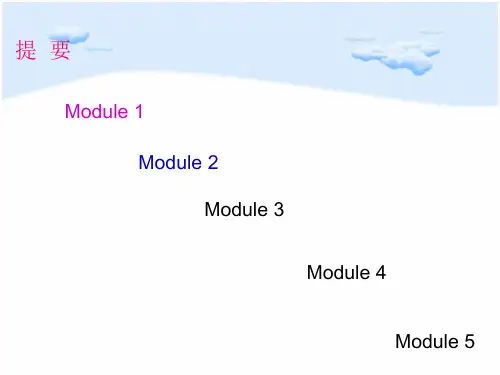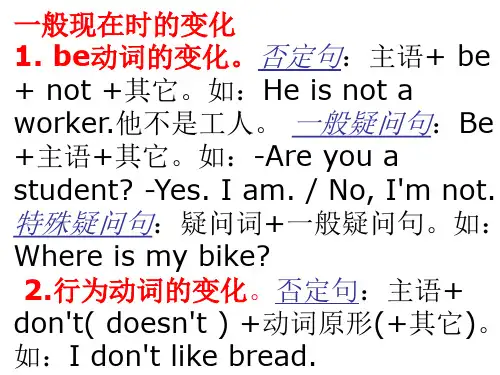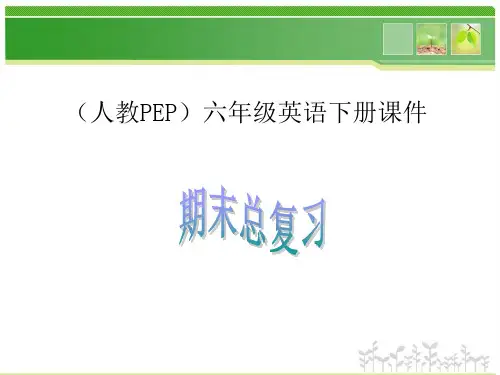- 1、下载文档前请自行甄别文档内容的完整性,平台不提供额外的编辑、内容补充、找答案等附加服务。
- 2、"仅部分预览"的文档,不可在线预览部分如存在完整性等问题,可反馈申请退款(可完整预览的文档不适用该条件!)。
- 3、如文档侵犯您的权益,请联系客服反馈,我们会尽快为您处理(人工客服工作时间:9:00-18:30)。
一般过去时
1.一般过去时表示过去某个时间发生的动作或
存在的状态,常和表示过去的时间状语连用。一
般过去时也表示过去经常或反复发生的动作感谢。
如:
yesterday ,last( weekend ,month ,year…)
be used to
2.Be动词在一般过去时中的变化:
⑴am 和is在一般过去时中变为was。(was
3.以“辅音字母+y”结尾,变y为i, 再加-es, 如:study-studies
2020年10月在进行时表示现在正在进行或发 生的动作,也可表示当前一段时间内 的活动或现阶段正在进行的动作。He is taking pictures.
2.现在进行时的肯定句基本结构为
be+动词ing. The monkey is
一般现在时的构成
1. be动词:主语+be(am,is,are)+其它。 如: I am a boy.我是一个男孩。He is a student .他是一个学生 2.行为动词:主语+行为动词(+其它)。 如: We study English.我们学习英语。 当主语为第三人称单数(he, she,it)时, 要在动词后加"-s"或"-es"。如:Mary likes Chinese.玛丽喜欢汉语。
weekend . amy is going to climb
mountains tomorrow.
②will+ do. He will go shopping this
afternoon. He will go to shanghai next
2020年10月2日
10
month .
三、否定句:在be动词(am, is, are)l后加 not或情态动词will后加not成won’t。
2020年10月2日
1
一、 一般现在时:
1.表示事物或人物的特征、状态。
如:The sky is blue.天空是蓝色的。 He is a boy 他是个男孩 she has long hair .她有长头发
2.表示经常性或习惯性的动作。如:I get up at six every day.我每天六 点起床。一般的时间词有:often , sometimes 2020年10月2日 ,everyday ,usually 2
3.如果末尾是一个元音字母和一个辅音字母,
双写末尾的辅音字母,再加ing,如:run-
running, stop-stopping swim-
swimming
2020年10月2日
9
将来时理论
一、 概念:表示将要发生的动作或存在的状态
及打算、计划或准备做某事。句中一般有以下时
间状语:tomorrow, next day(week, month,
5.现在进行时的特殊疑问的基本结构
为:疑问词不达意 + be + 主语 + 动
词ing? 但疑问词当主语时其结构为:
问词不达意 2020年10月2日 + be + 动词ing?
8
动词加ing的变化规则
1.一般情况下,直接加ing,如:cookcooking
2.以不发音的e结尾,去e加ing,如:makemaking, taste-tasting take-taking
year…),soon, the day after tomorrow(后天)
this morning , this afternoon , this evening
等。
二、基本结构:①be going to + do;wuyifan
is going to visit his grandparents next
Where is my bike?
2.行为动词的变化。否定句:主语+
don't( doesn't ) +动词原形(+其它)。
如:I don't 2020年10月2日 like bread.
4
当主语为第三人称单数时,要用doesn‘t构成 否定句。 如:He doesn't often play. 一般疑问句: Do( Does ) +主语+动词原形+其它。如:-
2020年10月2日
3
一般现在时的变化
1. be动词的变化。否定句:主语+ be
+ not +其它。如:He is not a
worker.他不是工人。 一般疑问句:Be
+主语+其它。如:-Are you a
student? -Yes. I am. / No, I'm not.
特殊疑问句:疑问词+一般疑问句。如:
swinging. She is cooking dinner .
he is doing his homework.
2020年10月2日
7
现在进行时的否定句在be后加not。 She is not taking pictures. He isn’t climbing moutains. 4.现在进行时的一般疑问句把be动词 调到句首。Is he reading a book? Is the rabbit running ?
Do you often play football?- Yes, I do. /
No, I don't. 当主语为第三人称单数时,要用does构成一般 疑问句。 如:- Does she go to work by bike?- Yes, she does. / No, she doesn't.特殊疑问句: 疑问词+一般疑问句。如:How does your
not=wasn’t) ⑵are在一般过去时中变为
we2r02e0年。10月(2日 were not=weren’t)
11
⑶带有was或were的句子,其否定、疑问的变 化和is, am, are一样,即否定句在was或were 后加not,一般疑问句把was或were调到句首。 3.句中没有be动词的一般过去时的句子
father go to work?
2020年10月2日
5
动词+s的变化规则
1.一般情况下,直接加-s,如:cook-cooks, milk-milks
2.以s. x. sh. ch. o结尾,加-es,如: guess-guesses, wash-washes, watchwatches, go-goes


